Shawn Stanley - New Strides in PVC Membrane Recycling - PODCAST TRANSCRIPTION
July 18, 2023 at 10:00 a.m.Editor's note: The following is the transcript of a live interview with Shawn Stanley. You can read the interview below or listen to the podcast.
Intro/Outro: Welcome to Roofing Road Trips with Heidi. Explore the roofing industry through the eyes of a long-term professional within the trade. Listen for insights, interviews, and exciting news in the roofing industry today.
Heidi J. Ellsworth: Hello and welcome to another Roofing Road Trips from RoofersCoffeeShop. This is Heidi Ellsworth and I'm here today to talk about one of my favorite subjects, and that is sustainability. It's kind of confusing for a lot of people and including myself. There's just so much happening and it's happening so fast. So we asked who I would consider an expert on what's going on with sustainability and carbon reduction, all of those great things, Shawn Stanley from IB Roof Systems to come and talk to us about sustainability. Welcome to the show, Shawn.
Shawn Stanley: Thank you. Thank you for having me, Heidi. Appreciate it.
Heidi J. Ellsworth: So happy to have you on here to talk about this important, important issue in construction and definitely in roofing. Before we get started, could you introduce yourself and tell us a little bit about IB Roof and what you do there?
Shawn Stanley: I'm the sustainability director for IB Roof Systems. I've been very passionate about this for quite some time, and am excited to be in this role where I'm actually able to not just help our company becoming more sustainable and lowering our carbon footprint, but for the industry as well. I'm the head of the Environmental PVC Task Force at SPRI. I'm involved with the Cool Roof Rating Council. I'm involved with the Final Sustainability Council and the CFFA. All those have some incredible minds around sustainability and how we can make this better.
Heidi J. Ellsworth: Yeah. And we have to, we just I have to, so. And there is such a movement within all the organizations you just mentioned and within the industry overall that it's so different. Every year, it's becoming a higher priority, which I think is so important for the industry overall.
Shawn Stanley: Yes.
Heidi J. Ellsworth: So on that note, what are you seeing with the focus on sustainability in roofing?
Shawn Stanley: Well, and that's a great question because if you... And when you were talking about earlier when you said that it's kind of confusing, it is because it means different things to different people. I was in a seminar where we had a very prominent roof consultant presenting, and I asked the question, what was his view of sustainability in roofing? And his answer was, "Any roofing material that will last long or longer than two decades." So I rephrased, "Can you rephrase that answer into more of an environmental realm?" And then he came back with, "Well, I thought I did." Well, his view of sustainability was something that is going to last a long time. You wouldn't have to get new raw materials and remanufacture and ship and install. You wouldn't have to do that because it's there for a long period of time. Now, others are looking at, I want to circuit the economy. I want recyclability. I want things that are more natural, so to speak.
Heidi J. Ellsworth: Right. Keep things out of the landfills.
Shawn Stanley: Right. But having those two in different silos is not the best. Putting those together is what we need to do. We need to put sustainability as long as life of performance, but also in sustainability of circular economy. That's where we're going to find the best bang for our buck, so to speak.
Heidi J. Ellsworth: Yeah, I agree. Unfortunately, we make too many silos. And it needs to be a holistic approach, which is so important. And you've really embraced that at IB Roof Systems. So maybe share with us why sustainability is so important to you, your family, the company. You guys have just really wrapped your arms around it.
Shawn Stanley: Well, I think it just makes sense. If there's a better way or smarter way to manufacture, install, and have a better end of life, why not pursue that?
Heidi J. Ellsworth: Yeah.
Shawn Stanley: And that's kind of what we are looking at. Looking at the smartest ways to do this. There's got to be a way that we can have something that's going to perform, and that's something that we're going to be able to reuse, repurpose, or recycle, or upcycle. Those types of things we have to keep in mind as we're moving forward, and that's kind of what I'm focusing on in with IB Roof Systems. We look at everything that we produce, anything that's not being used, how can we reuse it? How can we recapture that and use it for something different, or recycle it or repurpose it? Even the cardboard cores that our master rolls come on, we give those to a flooring company because they can cut them up and use them as cores for their vinyl flooring. To just be smarter in the way we produce, the way we manufacture, and the end of life when it's done being this useful self.
Heidi J. Ellsworth: I love that too, because you're being creative. It is... So many people think, 'well, it just has to be recycled, or it has to be this or it has to be that.' But here you are building a partnership with a flooring manufacturer and saying, 'Hey, we can't use these cores anymore, but you can.' And that to me is super creative and solves a problem where a lot of times people are just, they get overwhelmed with the bigger picture of "How do I recycle this?"
Shawn Stanley: And those cores, they're about over a thousand pounds a week.
Heidi J. Ellsworth: Wow.
Shawn Stanley: That would normally go into a landfill because those hard card cores really can't be recycled easily. So they're mainly going in the landfill, but now we're able to repurpose it.
Heidi J. Ellsworth: I love it. We had a gentleman on an earlier podcast also talking about recycling batteries, and we just kind of, and I'm probably going to age myself, but in our generation it's like, oh, the batteries done. Throw it in the garbage. It's not a big deal. Well, it is a big deal. It's a bigger deal than any of us really realize. And so yeah, there's so many solutions out there that we need to keep listening, hear what everyone else is doing. But I am also really interested in PVC because there's a lot of myths out there about PVC. And so I would like to have you share why PVC is more sustainable or recyclable than other roofing materials because I don't think everybody sees it that way sometimes.
Shawn Stanley: Well, there's been a lot of talk about PVC in the past few years, and there's a lot of things that they say are wrong with PVC. But when I was talking about those two different silos, we have something that will perform for a long period of time. Now, a lot of people think of PVC as something that is only going to be used for a short period of time then sit in a landfill for 50 years. But why not use it for something that's going to perform for 50 years and then be repurposed? That's what the magic of PVC is. It's going to put those two silos together. You're not only going to have the performance, but then you're also going to be able to recycle or repurpose it and have a whole new life. We just got through removing a old PVC roof from a roof in Oklahoma.
The roof was damaged by large hail, and that's kind of in front of everyone's minds with all these severe storms that are going through the country right now. And so we were able to take that off and we're going to send it to a flooring manufacturer. He's going to be grinding the PVC up, putting it on the back part of his vinyl flooring. And we're going to be able to track this going from the roof to the recycler, and then to the building where it's going to have a new use of life.
Heidi J. Ellsworth: Wow.
Shawn Stanley: And so PVC is unique because it's not 100% fossil fuels like a lot of plastics. It's half natural gas, half salt. And so because of that, it's more sustainable. It doesn't use as much natural resources that other plastics use. Plus it's an inert, nothing really reacts to it. That's why a lot of hospitals use it. It's very easy to keep claim to sanitize and all these things that the plastic is unique for. When you get to be truly sustainable, PVC is the best at all these things because it's unique. Now, you look at other forms or other alternatives. Either they're going to have a larger footprint being manufactured or they're have a larger footprint for being recycled, or they're going to have other faults that are going to be less sustainable than PVC plastic.
That's one thing that both these groups are not looking at is what the alternatives are going to be. If we were to substitute PVC with something else, what's going to the alternative? Well, in roofing, the only alternative is something that is 100% fossil fuel or 100% hydrocarbon. That's really the only other option. So that's going to have a larger footprint. And if it's not going to last as long as PVC, you're going to have to use new raw materials. You're going to have to ship, refine, manufacture, ship, install, and have another end of life where you could have that one life cycle with PVC roofing.
Heidi J. Ellsworth: That, see, those are the kind of facts and figures that we need to get out there because there are, as you well know, some myths and some misconceptions overall. So let's talk a little bit, you were... I love this, what you're doing with the flooring manufacturer again and putting that together for the backing. That makes so much sense. But IB Roof has several new methods for recycling PVC membranes. What are some of the other ones, them along with what you're doing with the flooring industry?
Shawn Stanley: This is really exciting stuff. There are ways that we can speed up the natural process of PVC. And in a landfill, it's going to last for 50 years before it starts breaking down. Oregon State University has developed a method where we could pause that breakdown in an amount of hours instead of decades.
Heidi J. Ellsworth: Whoa.
Shawn Stanley: And so they use hydrogen as a catalyst and they break everything down basically into the different building blocks. So everything's broken down. Then they're able to recapture the hydrogen either for electricity or for heat. They take the chlorine and they recombine a sodium, turn it back into salt. And what we're left with is this high quality wax that is needed for adhesives in packaging, glue guns. All these things that are on the rise of being needed. And the only thing that's left is what they call a char or carbon, but it's sequestered. It's not released into the atmosphere. So it's inert. It's just sitting there. We can bury it and it's not going to hurt anything, but it doesn't release into the atmosphere. So as far as a circular economy, it's pretty much getting pretty close to that golden grail there with that holy grail.
Heidi J. Ellsworth: Yeah. And even the char, if that's carbon, does that help going into the ground?
Shawn Stanley: Well...
Heidi J. Ellsworth: You never know. The way they keep finding uses for things, it could be be.
Shawn Stanley: Yes, and what we're finding is we're getting very high yields at low temperatures. So we're not having to put as much energy into this to get this to break down. And we're supplying them with membrane to do testing. In fact, I have a piece of the roofing membrane from the Oklahoma roof that I just talked about earlier that I'm going to send to them. So they're going to be able to use used roofing material and see how that reacts With this process. Within I would imagine a few years, we're going to be able to see this grow and scale and actually try in real life settings. It's really exciting stuff.
Heidi J. Ellsworth: That's really exciting. You can just see this, that makes so much sense. And to be able to recycle that off the roof, I think that's the hardest thing for contractors. They want to recycle. Their building owners want them to recycle. The industry wants to recycle. But to have these solutions, that's the hard part. So what's happening with Oregon State, that could be an amazing breakthrough.
Shawn Stanley: Right. And most of the things are happening on the East Coast with recycling and recyclers. Not a lot is happening on the West Coast. So this could be a really huge thing for us on the West. And one thing that we are wanting to reduce if we can, is the shipping from the job site to the recycler. And if you'd have to go from the West Coast to the East Coast, that you're adding carbon footprint to the whole process by doing that. So having something on the West Coast as a solution would be huge.
Heidi J. Ellsworth: Yeah. Yeah. That is really good. So for roofing contractors right now, as we're hearing about all the East Coast recycling, what's coming hopefully in the West with Oregon State, what are some of your tips to roofing contractors to do right now when it comes around recycling and the recyclability of PVC roof membranes?
Shawn Stanley: Well, it really comes to the fact that we're going to have to start at the bidding process. There are some building owners that are saying, okay, any roof material that we're going to put in our spec needs to be shown that it's going to be recycled at end of life. So we need to build that into the process. At end of life, this is the going be the cost to remove and to ship it to the recycler. And some building owners are requiring that. And one thing that a contractor could do is actually put that in a bid as an option. 'This is our bid. If we want to recycle it at the end of life or at the end of the warranty, then this is going to be the cost, and we can add that right into the bid.' And so at the end of life or the end of the warranty, it's already figured in and it can be done without any more out of pocket.
Heidi J. Ellsworth: Excellent. Wow.
Shawn Stanley: Actually, this one way that a contractor can set himself apart-
Heidi J. Ellsworth: Yeah.
Shawn Stanley: as adding this as an option to show that we're considerate about the environment. We want to do better, and this is one way we can do it. And like I said before, when we're having these recyclers, they really want as much as possible to ship on a truck. They don't want to ship half a truckload, and so they want to make sure they fill up the full truckload. So a lot of the industry groups, the CFFA Vinyl sustainability account, so they're working together to find consolidators. Meaning that if I have a 200 square roof that I'm going to remove, I can take it to this consolidator. They're going to hold it until you get to a maximum truckload of 42,000 pounds. Then that truckload's going to go, and it's going to minimize the carbon footprint to the recycle.
Heidi J. Ellsworth: I love how everybody's coming together and to make all of this happen. So resources wise, obviously go to IB Roof Systems to get information from you and the team there, but mention some of the other associations. I know you mentioned them earlier, but just so everybody can write them down. And if they are looking to get more information, where should they be going?
Shawn Stanley: Final Sustainability Council is a great resource. They really are on the forefront of trying to come up with the best methods to help PVC being recycled. The CFFA is another organization that I'm getting more involved with, and they are really high on sustainability, especially with PVC. SPRI, we are active in the roofing industry as far as codes and applications. And being the Environmental Assisted PVC Task Force, we're looking at the best ways we can help protect PVC from legislation of... Well, let me go back a little bit.
Heidi J. Ellsworth: Yeah.
Shawn Stanley: There are uses of plastic that may not be the best. If we're going to use plastic for a week or less and then throw it away, that may not be the best use of plastic. And there's probably going to be legislation against plastic use for that source.
If we can find a bioplastic that could be used and then discarded and degrade quickly in a landfill, that would probably be best. But all plastics are not the same. We have to look at the plastics and we'll separate the different uses for the short term single use plastic or the long term durable or reusable plastics. Those need to make sure that we're not going to legislate against. Think about all the plastic that is used that is helpful. In cars, if you want a battery powered car to go longer or further without charging, you're going to have to have lighter materials. Metal or other things are not going to be lighter. Plastic is going to be more light. It's going to give you the efficiency that you want. Plastic is not going to go away. It's too useful and it's too sustainable. We just have to separate the poor uses from the good uses.
Heidi J. Ellsworth: It makes total sense. Yeah, it does. Because people unfortunately all always like to lump everything into one's bag, but it's not the same.
Shawn Stanley: Right. And so all these different organizations, I'll get back to that. They are, I'm excited to be involved with them. They are embracing environmental aspects of plastic. They're embracing sustainability, they're embracing recycling, and we're all working together. There's a lot of smart people out there that we're going to come up with solutions that are going to prove that PVC is the most sustainable roofing material. And as far as that goes, a lot of other plastic uses that's out there.
Heidi J. Ellsworth: That's great. That is so cool. And a lot of this we have on your directory on RoofersCoffeeShop. So as people are looking for these organizations, a number of these organizations are already on RoofersCoffeeShop. SPRI, the Cool Roof Rating Council, a number of these. Sean, you and I may have to talk and make sure we get all these other organizations onto the directories also so that people can easily find that information on the CoffeeShop. I do want to, I'm going to throw in one other question just because we haven't talked about it for a while and you've done so much. But when we're talking about resources, you have also put together a carbon calculator, and that has made a big difference for people to really get that bigger picture. Just before the end of this podcast, can you talk about that just a little bit?
Shawn Stanley: Well, thank you. Yes. I was very excited. So the carbon calculator shows how much energy we're going to be able to save compared to a dark roof. Reflective roofing is all what the Cool Roof Rating Council is about, showing how much energy we're going to save. But also, we went a little bit further. Since we know of the embodied emissions of our material from our environmental product declaration, we're able to show, okay, if we're going to save this much energy compared to a dark roof, how much would we have to go before our roofing material would be carbon-neutral? And so it seemed easy on the surface, but as you dug down deeper, it was more difficult because you had to look at every state and how they produce electricity. And the EPA has the electrical intensity grid chart that shows how dirty the electricity is in each state.
So you have to use that. You have to use all the carbon that's created with shipping and manufacturing and end of life, and then look at how much energy you're going to save and then combine that all together. So what we have is a very easy calculator that you can put in the city and state, and then the size of the roof that you're going to be putting on, and then how long that would take to become carbon-neutral. And then also, if we can show with that, we can show how much many trees that would be. It would be the same as planting that many trees, or the same as or equivalent as putting so many cars off the road.
Heidi J. Ellsworth: Right.
Shawn Stanley: We want to put this in ways that people can understand it.
Heidi J. Ellsworth: Yeah.
Shawn Stanley: But yes, roofs can be a big thing with becoming more carbon-neutral, becoming sustainable, and something that's going to last a long time.
Heidi J. Ellsworth: It all works together. It all works together. And we talked about how contractors can get started. It really is about getting the information, getting in touch with companies like IB Roof Systems, these associations, the Vinyl Sustainability Council. That is really where you start. And then check your local area. Sean, I'm sure you see it too, but I see some amazing recyclers around the country who are just doing this every day with all types of materials. And so if they're not currently doing something with PVC, ask them about the products that you're doing because people want to make this happen.
Shawn Stanley: Yep.
Heidi J. Ellsworth: Well, Shawn, thank you so much. Thank you for being on Roofing Road Trips. Thank you for everything you're doing for our world and the environment. IB Roof Systems is just so inspirational, and so are you. Thank you so much for being here today.
Shawn Stanley: Thank you, Heidi.
Heidi J. Ellsworth: Thank you. And thank you all for listening. This is the kind of stuff I love. I love the sustainability. We are going to continue to bring you information on how you can incorporate this into your business and how it can make a difference not only for your business, but for your community and for the world overall. Be sure to check out all of our podcasts under the read list and watch initiative under Roofing Road Trips. And also be sure to check out, like I said, the IB Roof Systems directory, the CRRC, Cool Roof Ratings Council directory, SPRI.
There is a lot of information on RoofersCoffeeShop that will help you get started down this road if you're not already well on your way. Be sure to listen to all of our podcasts on your favorite podcast channel. Be sure to subscribe and set those notifications so you don't miss a single episode. We'll be seeing you next time on Roofing Road Trips.
Intro/Outro: Make sure to subscribe to our channel and leave a review. Thanks for listening. This has been Roofing Road Trips with Heidi from the RoofersCoffeeShop.com.





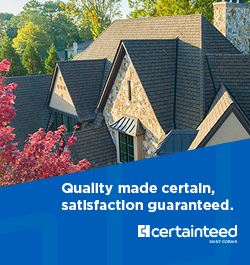







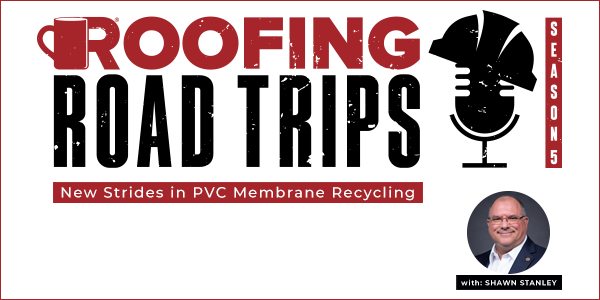
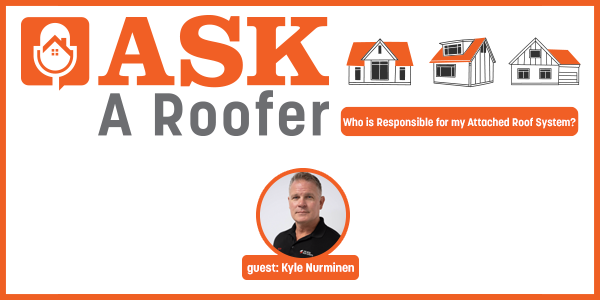
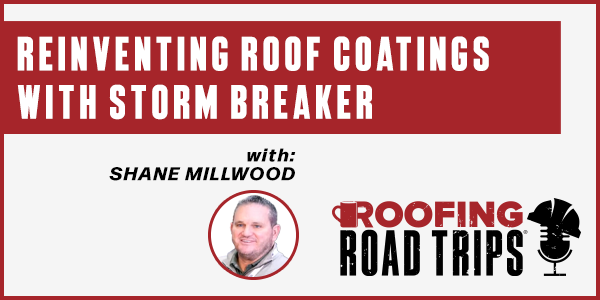
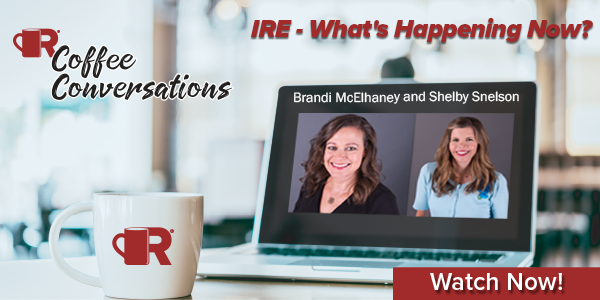




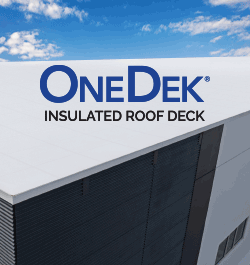


Comments
Leave a Reply
Have an account? Login to leave a comment!
Sign In